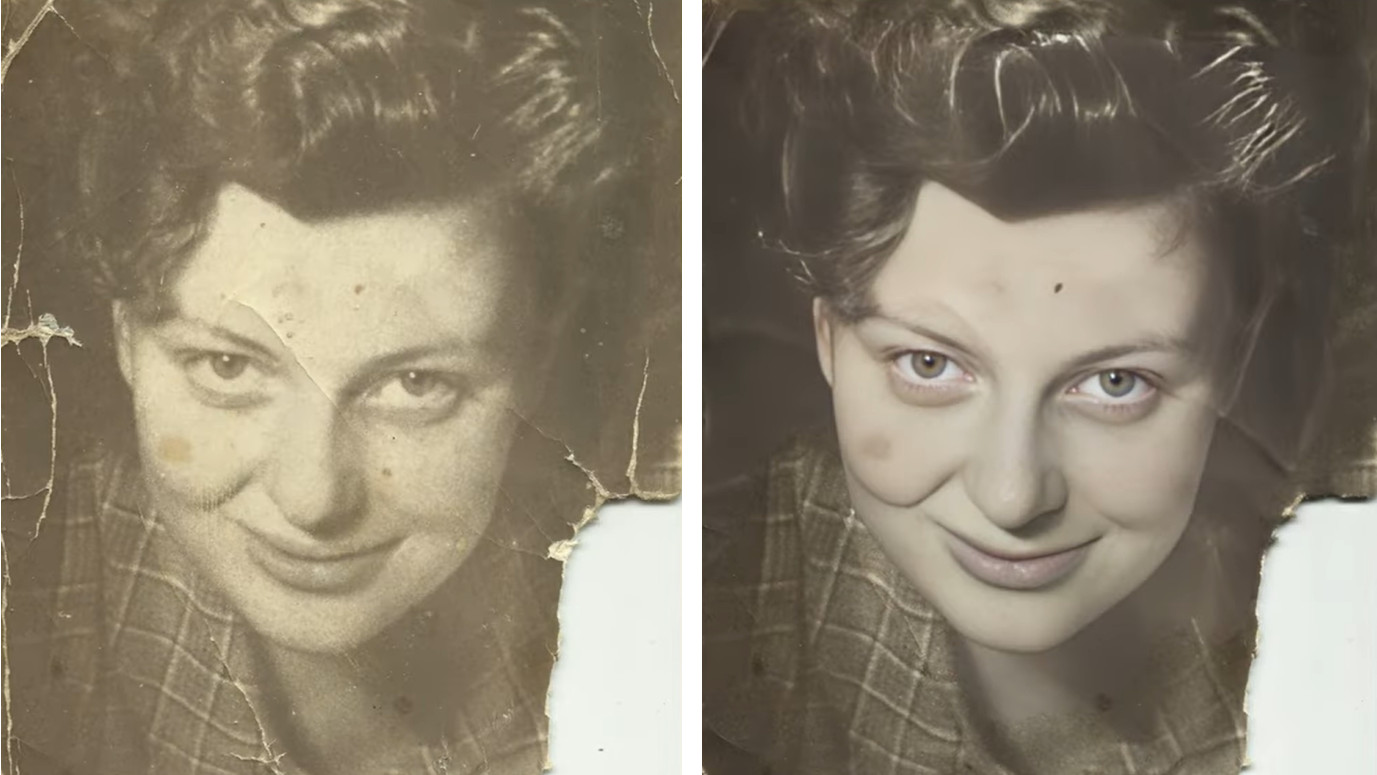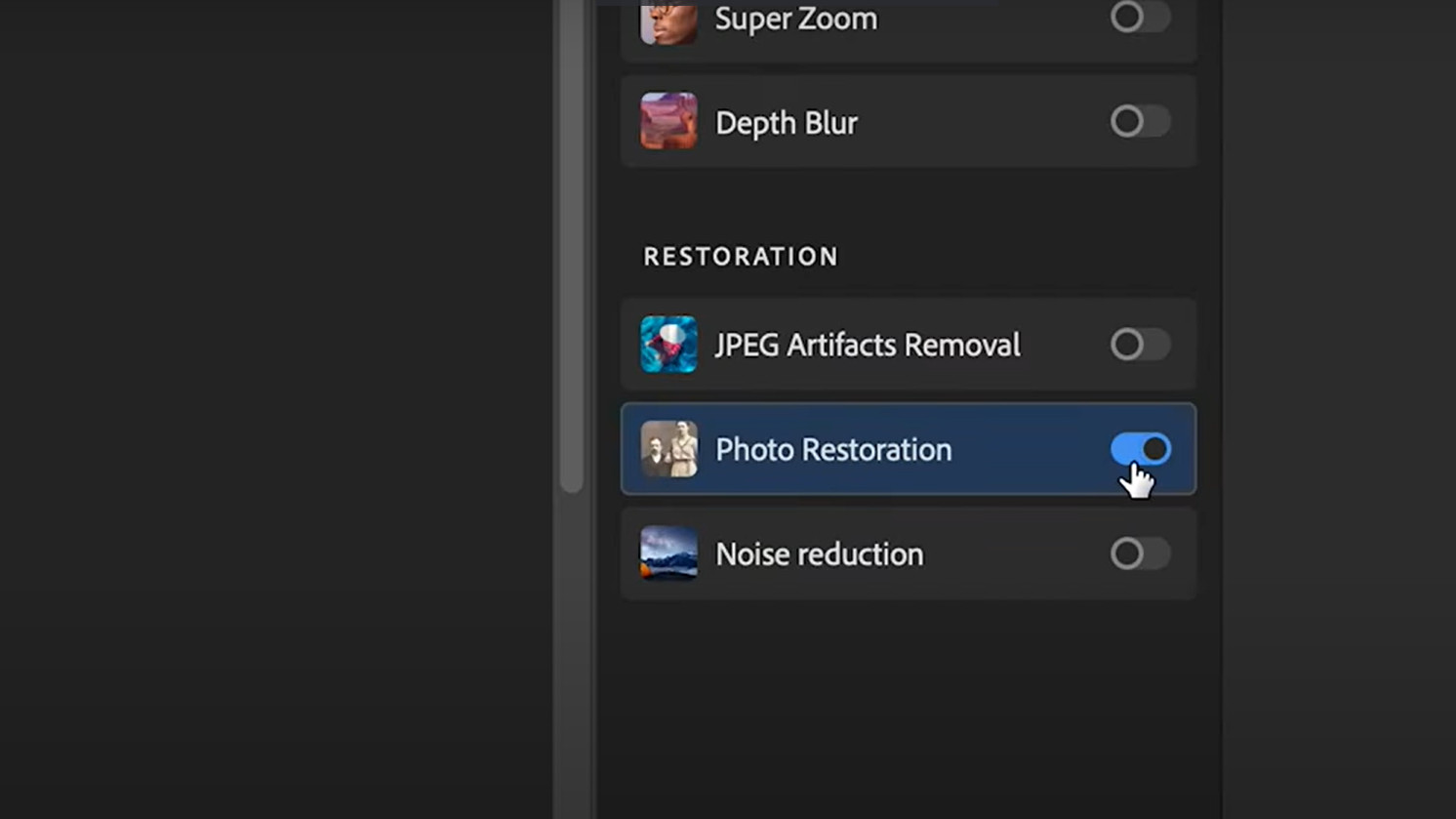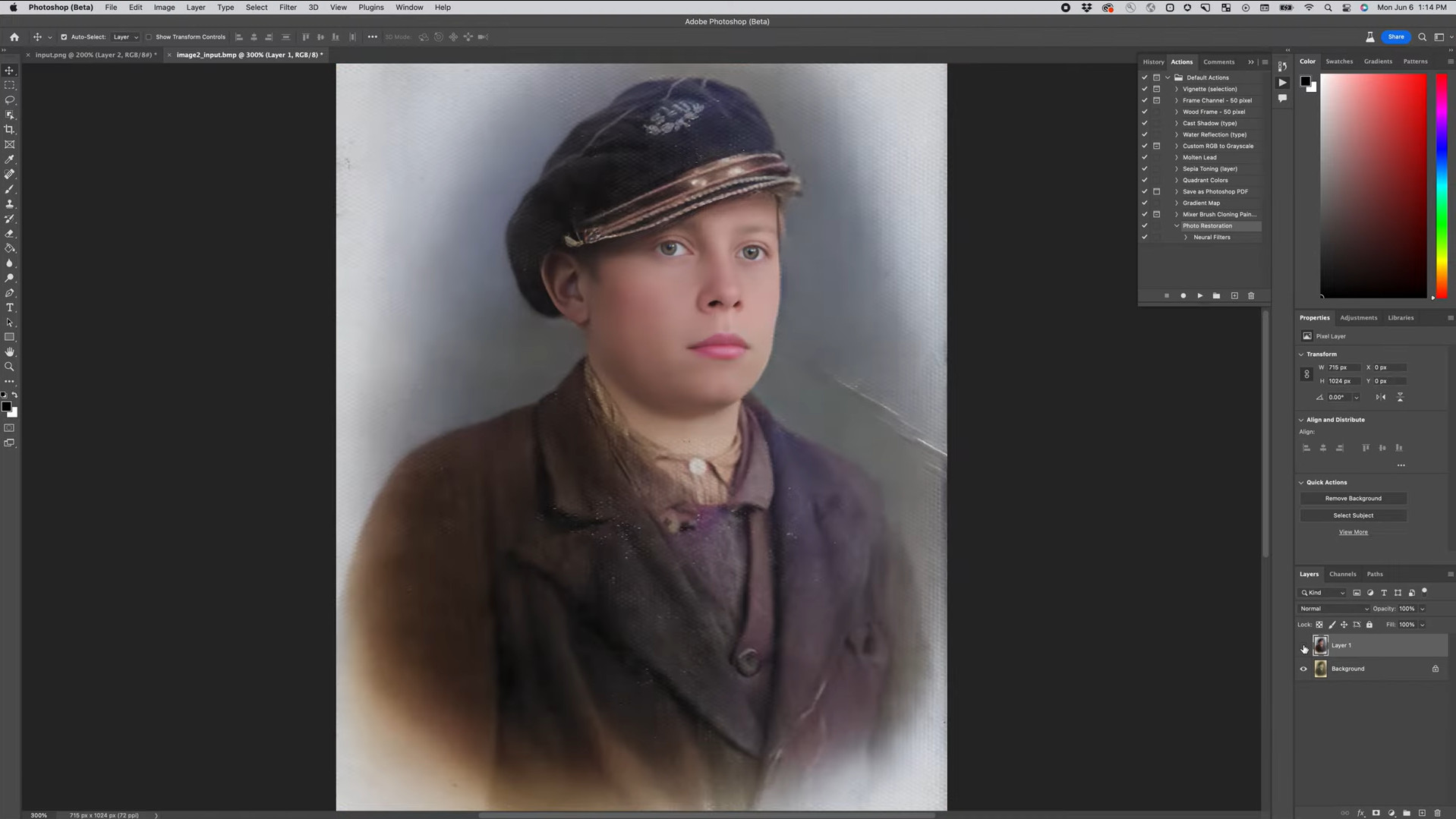Photoshop update exclusive: clean up your old photos with just one click!
Adobe's new Photo Restoration Neural Filter looks incredible.

Adobe's next downloadable Neural Filter for Photoshop, which is called ‘Photo Restoration’ is about to be announced, and we've been given an exclusive first look.
We attended last night's launch party and got a closer look at the Photo Restoration Neural Filter in action – it's designed for processing old photos, and essentially is a fast, AI-powered way to make them look brand new by removing imperfections and grain.
And we do mean fast – the Photo Restoration Neural Filter doesn't really do anything that Photoshop couldn't already do, but the difference is simply that it does it in seconds, with just a single click. Taking the grunt work out of image editing, Photo Restorations will turn removing scratches, noise and other imperfections from old photos – a task that could easily take hours – into the work of a moment. This kind of wizardry is par for the course with Neural Filters, and why Photoshop CC ranks so highly in our guide to the best AI photo editing software.
You can see a video of the Photo Restoration Neural Filter in action below to get an idea of how it works:
We were able to speak to Adobe at the launch event to learn a little more about the Photo Restoration Neural Filter and how it works – here's our exclusive Q&A.
Creative Bloq: Can users customise the way the Photo Restoration Neural Filter works (e.g. use some features of the filter but not others, so remove scratches and noise but retain original colours)
Adobe: Yes, some aspects of restoration can be turned on and off within the filter.
Get the Creative Bloq Newsletter
Daily design news, reviews, how-tos and more, as picked by the editors.
CB: Does the colour correction aspect of Photo Restoration work differently to the existing “Colorize” neural filter?
A: Colorize generates new colors for a black and white image (or ignores color and recreates them if starting with a color image). The Photo Restoration filter doesn’t add color but it can be used in combination with Colorize to restore damages and guess colors.
CB: Have any photographers been able to try out the filter in advance? What kind of feedback has Adobe received?
A: We have tested this with pre-release customers and made a number of changes to improve it based on their feedback.
CB: Does the team have any advice for getting the most out of the Photo Restoration filter? Any good tips or tricks for using it?
A: This filter is meant to be a starting point or for situations where a quick fix could be good enough. There are many more ways to refine things or even remove parts of the automatic changes the filter suggested within Photoshop. Using it in combination with existing Photoshop capabilities rather than a one click fix is the best way to get the best of both worlds in terms of automation and manual control. We’d also suggest trying it out with many different images to get an intuition when it could work well so you can better understand when it’s the right solution for a given situation.
CB: When can we expect Photo Restoration to be available to download?
A: Soon!

Neural Filters, if you’ve not used them, are Adobe’s downloadable AI-powered add-ons for Photoshop, designed to automate complex tasks. The simpler ones do straightforward things like convert a photo to or from B&W, smooth out skin, or transfer a style from one photo to another.
However, there are also more complex Neutral Filters in Beta that can do more radical, futuristic things like alter facial expressions. It's an incredible glimpse into what the future of photo editing is going to look like, and if you want to experience it for yourself, you can easily download Photoshop right away.
In the video above, you can see Photo Restoration synergising with other Neural Filters – further cleaning up a photo with Content Aware Fill, and adding some colour with Colorize Action. The end results are pretty impressive – it’s obvious even at a glance how well the imperfections in the photos have been removed and smoothed over, especially when you consider that the whole process only took a few seconds!
This definitely looks like it could be a real timesaver for working through scans of old photo albums or other archive-based projects. As you can see in the video if you pause and look in closer, there are sliders for modulating the intensity of the scratch reduction and photo enhancement effects, so depending on the quality of you're original image, you can instruct the filter to go in with a light touch, or go at an image a bit harder if it's really degraded.


Adobe is currently releasing multiple updates for its Creative Cloud services, including some fun stuff like this David Bowie collaboration, so we'll be reporting on these as they come in. If you want to try out the Photo Restoration Neural Filter for yourself, watch this space for confirmation of when it's going to be available to download.
I'm already thinking this could be the excuse I need to finally get around to digitising my old photos. In the meantime, for more timesavers, you can also check out our list of 55 free Photoshop actions.
Read more:

Thank you for reading 5 articles this month* Join now for unlimited access
Enjoy your first month for just £1 / $1 / €1
*Read 5 free articles per month without a subscription

Join now for unlimited access
Try first month for just £1 / $1 / €1

Jon is a freelance writer and journalist who covers photography, art, technology, and the intersection of all three. When he's not scouting out news on the latest gadgets, he likes to play around with film cameras that were manufactured before he was born. To that end, he never goes anywhere without his Olympus XA2, loaded with a fresh roll of Kodak (Gold 200 is the best, since you asked). Jon is a regular contributor to Creative Bloq, and has also written for in Digital Camera World, Black + White Photography Magazine, Photomonitor, Outdoor Photography, Shortlist and probably a few others he's forgetting.
